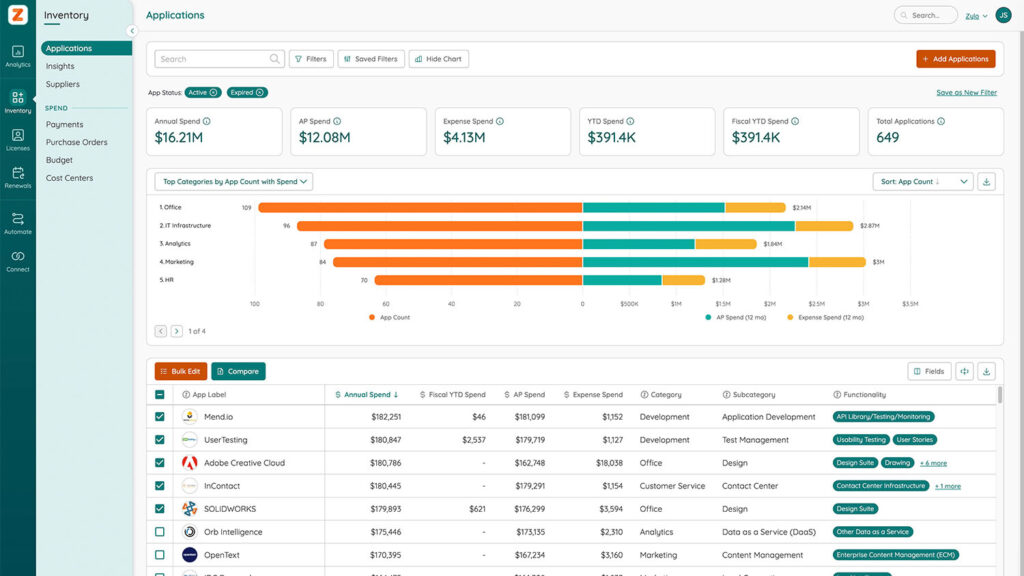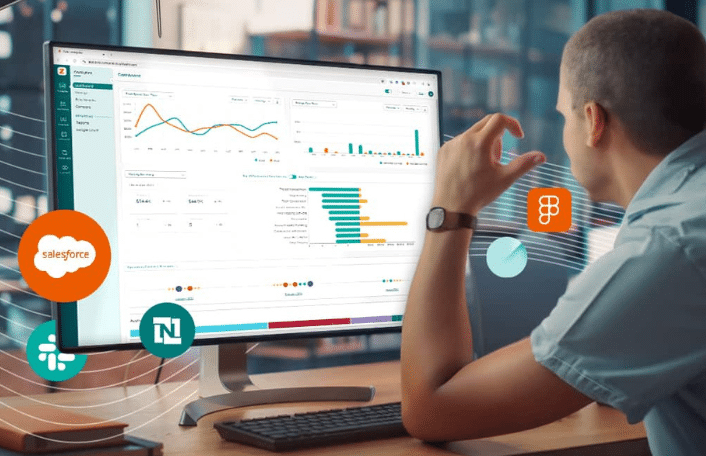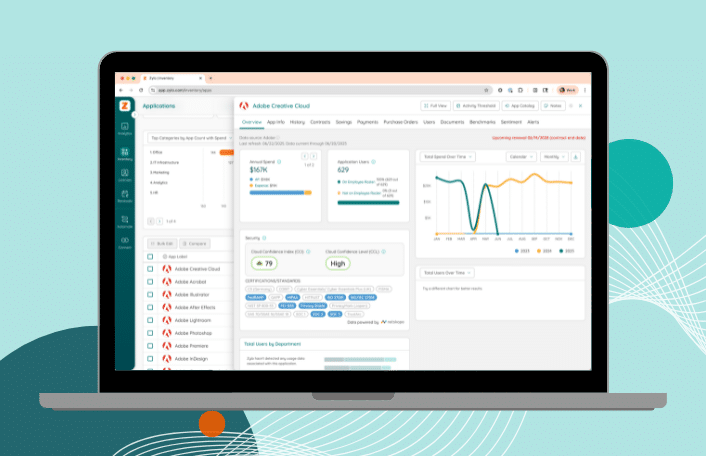
From Chaos to Control: Applying FinOps Thinking to SaaS
Table of Contents ToggleSaaS Subscriptions in the Modern BusinessThe Future of...
Back
Back
Search for Keywords...
Blog

Table of Contents
Netflix for television. Amazon Prime for household products. Peapod for groceries. Blue Apron for gourmet cooking. Stitch Fix for fashion. The list of subscriptions available to consumers today goes on and on. We’re caught (sometimes blindly) in a continuous cycle of paying for services that make our lives more convenient.
But consumers aren’t the only ones taking advantage of subscription services. IT teams and businesses have been subscribing to SaaS for awhile now—so much so that managing these services has become quite cumbersome. While consumers are (currently) on their own for managing their subscriptions, SaaS subscription management offers businesses a way to win in the subscription economy, while deriving increased value, organization, and cost savings.
Contrary to popular belief, the “subscription economy” isn’t new. But the way it’s taking over business models everywhere with explosive growth is—and it isn’t about to stop. The rise of tech in the workplace has allowed departments throughout the business the ability to purchase SaaS-based tools using their own budget and at their own pace. Plus, subscription-based services have made SaaS purchasing much easier, often negating the need to go through IT or procurement. Making SaaS purchasing available to more teams throughout the business has not only shifted decision-making power to individual leaders, but also increased innovation and productivity within each unit.
But like consumers, business leaders are often quick to opt for the free trial or introductory rate in the midst of their hurried and “need it now” mindsets, eventually forgetting about the app while it racks up high costs and decreased value for the business.
IT and procurement teams certainly don’t want to thwart the innovation that comes with SaaS. But security is at a major risk without their involvement. To be a true business partner, IT and procurement leaders must strike a balance between innovation and security for successful SaaS subscription management.
With SaaS management software, IT and procurement leaders can view all cloud and SaaS applications purchased throughout the organization with an enterprise-wide dashboard of usage data, licensing information, company-wide stats, and more. IT and procurement teams no longer need to feel at odds with the rest of the business, acting as a “hall monitor” of SaaS. SaaS subscription management software allows teams to work together to expose unused applications and cost savings, while gathering deep utilization data for building the appropriate governance strategies and empowering teams throughout the business to do their best work.

The subscription-based business model is growing—and business of all types want a piece of the pie. While subscription services don’t make sense for every industry, the subscription economy is growing in creative ways that will make SaaS subscription management necessary for even more businesses in the near future. Here’s what you can expect from the subscription economy over the next several years:
Subscriptions have a history in consumer products—from milk delivered to your door every morning to an array of men’s shaving products sent monthly. But industries from automotive to farming can take part too, even if in completely different ways. While no one needs (or can afford!) a new engine delivered to their door each month, they can get on board with a subscription to access usage data and analytics. Already, companies like John Deere are tapping into data to monitor farm equipment usage, while companies like Cadillac are offering car enthusiasts the chance to drive multiple models around for a hefty $1,500 per month.
One of the great things about subscriptions is that you get to use products without making the huge investment you’d be obligated to if you purchased it outright. And because businesses can track what you use most and how you use it, they’re able to provide you with a more personalized version of that service at a much lower cost than it would be to purchase the entire program. For instance, instead of having to purchase the entire Adobe Creative Suite, designers can pick and choose between individual programs for graphic design, photo editing, coding, and more to subscribe to. Knowing your selections and usage data then allows them to send you helpful content around that particular product or recommend new products that complement the ones you already have.
Clearly, customers aren’t interested in the same things they used to be. They’re trading ownership for speed and convenience; one-size-fits-all for a customized experience. More than recurring revenue, subscription services are about building relationships with customers toward increased loyalty with every monthly charge or annual renewal. If you’re not deriving this type of value or personalization from some or all of your SaaS applications, perhaps it’s time to reconsider what else is out there.
With greater flexibility and understanding of customers through data, SaaS providers can afford to branch out from their core offerings to explore new fields. As the subscription economy grows, we’ll not only start to see enhanced versions of the products we already love, but new offerings that may not have anything to do with what these companies originally marketed. The SaaS subscription model gives vendors greater agility to try new things, while giving customers the ability to “try before you buy” through first-time trials or track user reception over time.
What will we think of next? Before we can answer that question, we must first get a handle on our current tech environments. In today’s security climate, it’s too risky to not have a grasp on what’s being used in your organization. With the proper SaaS subscription management, gaining control of your tech stack while still supporting growth and innovation is not only possible, it’s necessary—before the subscription economy grows even bigger.

Table of Contents ToggleSaaS Subscriptions in the Modern BusinessThe Future of...

Table of Contents ToggleWhy Data Integrity Breaks DownWhat Does Data Integrity...

Table of Contents ToggleSaaS Subscriptions in the Modern BusinessThe Future of...

Table of Contents ToggleShelfware DefinedWhy Shelfware HappensPoor Organizational OversightShadow IT and...
| Cookie | Duration | Description |
|---|---|---|
| cookielawinfo-checkbox-analytics | 11 months | This cookie is set by GDPR Cookie Consent plugin. The cookie is used to store the user consent for the cookies in the category "Analytics". |
| cookielawinfo-checkbox-functional | 11 months | The cookie is set by GDPR cookie consent to record the user consent for the cookies in the category "Functional". |
| cookielawinfo-checkbox-necessary | 11 months | This cookie is set by GDPR Cookie Consent plugin. The cookies is used to store the user consent for the cookies in the category "Necessary". |
| cookielawinfo-checkbox-others | 11 months | This cookie is set by GDPR Cookie Consent plugin. The cookie is used to store the user consent for the cookies in the category "Other. |
| cookielawinfo-checkbox-performance | 11 months | This cookie is set by GDPR Cookie Consent plugin. The cookie is used to store the user consent for the cookies in the category "Performance". |
| viewed_cookie_policy | 11 months | The cookie is set by the GDPR Cookie Consent plugin and is used to store whether or not user has consented to the use of cookies. It does not store any personal data. |
